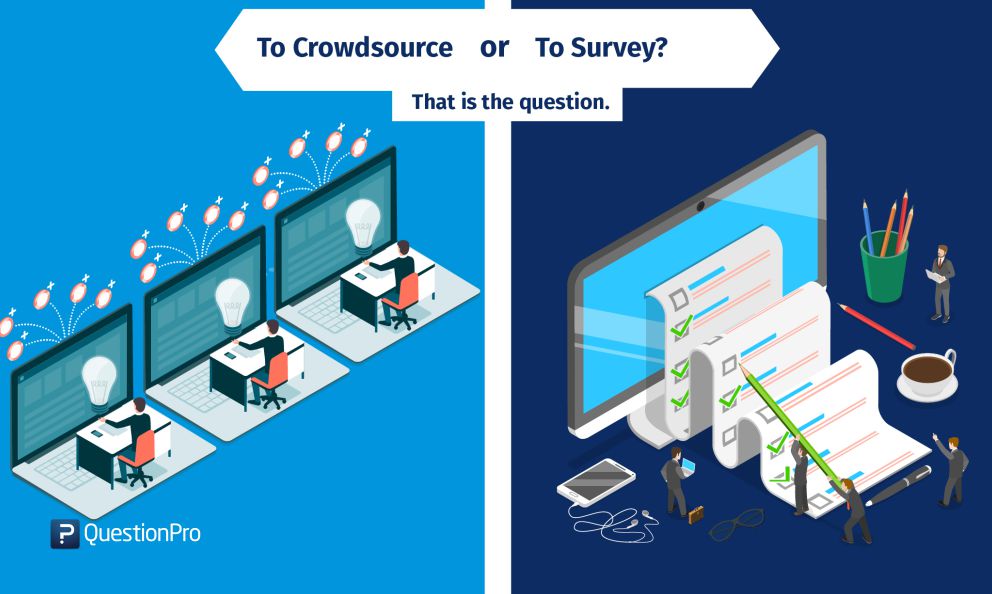 Reading Time: 2 minutes read
Reading Time: 2 minutes readWhat’s the Difference?
A question I hear from time to time is “is there a difference between crowdsourcing and market research?” And although the answer is definitely “yes,” I understand why there’s some confusion.
To begin with, crowdsourcing can cover any number of activities: from creating a distributed knowledge base (like Wikipedia) or crowdfunding (like Kickstarter). And then, there are the open innovation activities that happen on a platform like IdeaScale where participants in a crowd can offer suggestions or ideas that organizations can use to direct their efforts – whether it’s finding new product ideas or finding new ways to increase efficiency or break into new markets. And, to be fair, many market researchers will dig into and share data that will also help companies work on their products, processes, and markets. But market research (much like crowdsourcing) also covers a wide range of activities from trend watching to surveys, it is not always the same as crowdsourcing.
The fact of the matter is that you can learn a lot from the crowd, however. So when do you want to survey them and when do you want to run an open crowdsourcing conversation? Well, here are a few tips to get you started.
Tips for Deciding on a Crowdsourcing Engagement or a Survey
When a company or organization is looking for answers to specific, straightforward questions, a survey campaign may prove to be the answer. With the crowd, the conversation can go anywhere so you might end up in new directions with new questions. You can also answer almost any question from the simple (ex: which ice cream flavor should we develop?) to the complex (ex: how should we keep vegetables fresh in space?)
A survey allows administrators control over the direction of feedback acquired from participants. This helps maintain a shared information architecture. And although that can be great for statistical analysis, it could also curtail creativity or stimy new ideas. Sometimes you can even run crowdsourced data through a round of evaluation (like surveys) to standardize later stage evaluation.
Survey data is pretty easy to run through statistical analysis, because the questions and answers have the same architecture. Crowdsourced data is richer and therefore not always as straightforward in the analysis phase. T
Is your sphere of influence pretty limited? The crowd will guide the discussion to what they care about the most. This introduces topics that would not have been discovered using other methods.
Whatever method you turn to, you’ll find challenges and advantages. Just know which ones you can address and which ones are out of scope and use the right tool when appropriate. To learn more about open innovation and crowdsourcing, download our innovation starter kit.





















